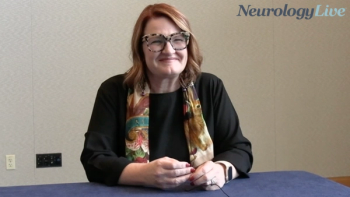This week Neurology News Network covered the phase 3 study of lacosamide in patients who experienced generalized tonic-clonic seizures, the phase 3 SUNRISE-2 study in elderly patients treated with lemborexant, and the effectiveness of the Cala Trio noninvasive neuromodulation therapy to treat hand tremor.
Welcome to this special edition of Neurology News Network. I’m Marco Meglio. Please excuse our appearance this week as a majority of the US workforce, including the NeurologyLive team, moves to working remote as we come together to help reduce the spread of the novel coronavirus.
UCB announced that lacosamide met its primary and secondary end points in a phase 3 study, significantly lowering the risk of experiencing a second primary generalized tonic-clonic seizure during a 24-week treatment period. Among a cohort of 242 patients randomized 1:1 to receive ≥1 dose of lacosamide or placebo, researchers documented that treatment with lacosamide resulted in a significantly lower risk of developing a second PGTCS during the 24-week treatment and a significantly higher rate of freedom from PGTCS during the treatment period compared with placebo. In total, 68.1% of patients on lacosamide had ≥50% reduction from baseline in PGTCS frequency per 28 days, compared to 46.3% of those on placebo. Furthermore, reductions of ≥75% from baseline in PGTCS occurred in 57.1% and 36.4% of the lacosamide and placebo groups, respectively. Freedom from PGTCS during treatment occurred in 27.5% of patients within the lacosamide group compared to 13.2% who received placebo.
Data from the phase 3 SUNRISE-2 trial presented virtually at SLEEP 2020 revealed that treatment with lemborexant was well-tolerated and efficacious in elderly subjects aged 65 years and older.SUNRISE-2 was a double-blind, placebo-controlled, 12-month trial that evaluated sleep measures of both 5- and 10-mg doses of lemborexant compared to placebo in multiple patient populations. In total, there were 949 subjects in the full analysis set, with 262 of them being elders. At 6 months, the median sleep onset latency significantly decreased from baseline for patients treated with lemborexant 5-mg (—21.7 minutes) and lemborexant 10 mg (–26.0 minutes) compared to placebo. Following 12 months of treatment, investigators noted that decreases of sSOL were maintained in the 2 dose groups.
New study results suggest that non-invasive neuromodulation therapy with the Cala Trio device can safely and effectively reduce hand tremor over the course of 3 months in in patients with essential tremor. The co-primary end points of the study—improvements on clinician-rated Tremor Research Group Essential Tremor Rating Assessment Scale (TETRAS) and patient-rated Bain & Findley Activities of Daily Living (BF-ADL) dominant hand scores—were both met with significance. All told, 62% and 68% of ‘severe’ or ‘moderate’ patients improved to ‘mild’ or ‘slight’ hand scores. Patients treated with the device showed improvement in TETRAS and BF-ADL from pre- to post-stimulation at each in-clinic visit point. Pre-stimulation tremor level also improved from Visit 1 to Visit 3 on both measurements. Renee Ryan, chief executive officer, Cala Health, said in a statement, "The PROSPECT study publication confirms that Cala Trio therapy is a safe and effective treatment option and, most importantly, shows the improved quality of life for these ET patients. These findings, consistent with those demonstrated in previous trials against sham, will be leveraged to support our reimbursement initiatives, leading to improved access for patients living with essential tremor."
For more direct access to expert insight, head to NeurologyLive.com. This has been Neurology News Network. Thanks for watching.



































